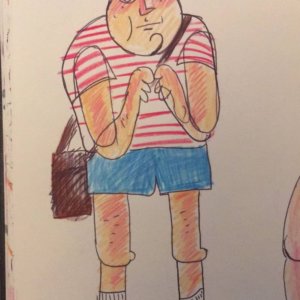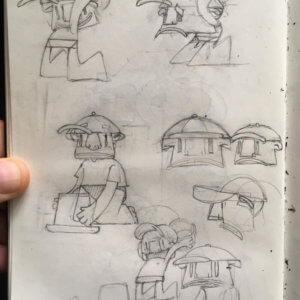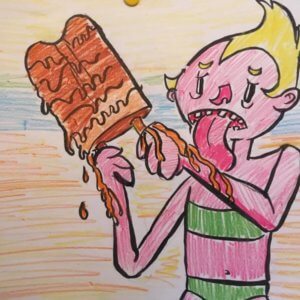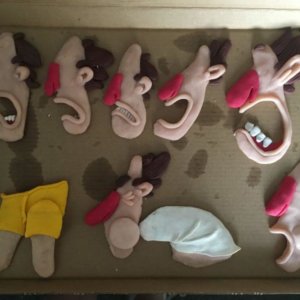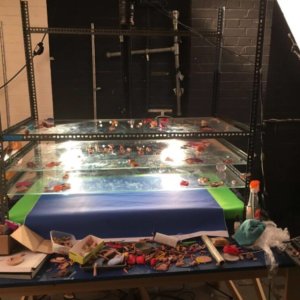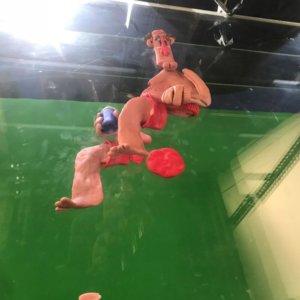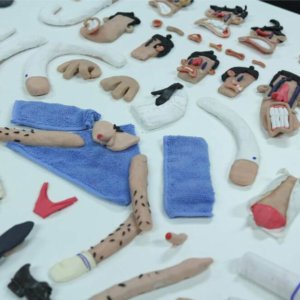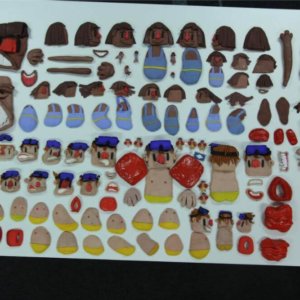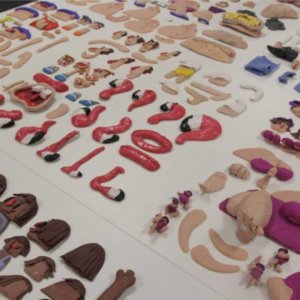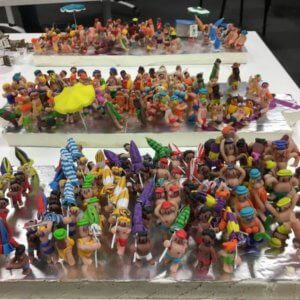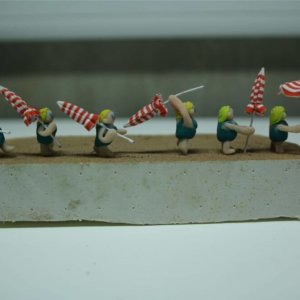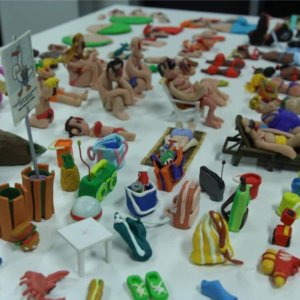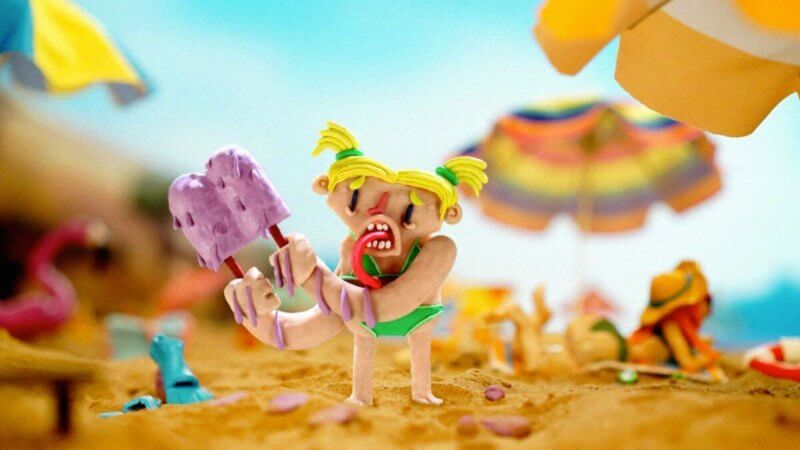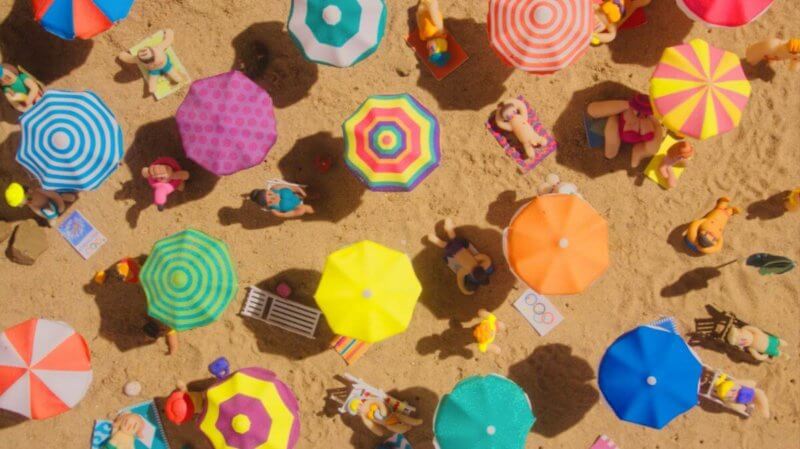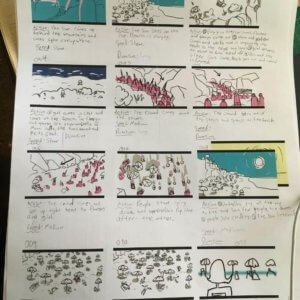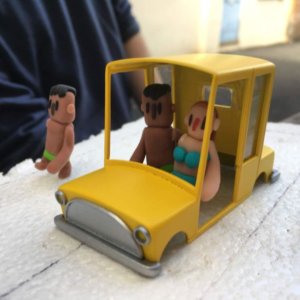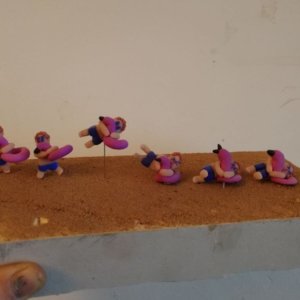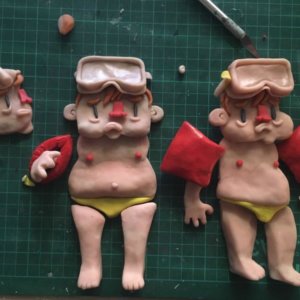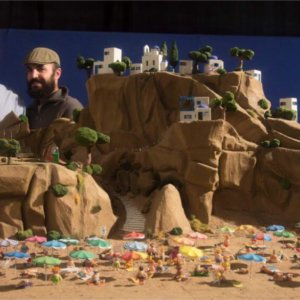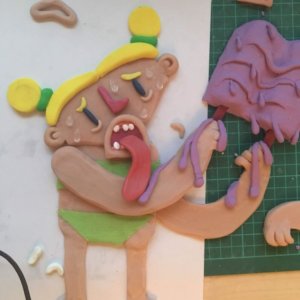Heatwave: An Interview with NFTS Graduate Fokion Xenos
I don’t know if it is the soundtrack, the bright colours or the overall design of this film but Heatwave just makes me want to grab my bucket and spade and head for a day at the beach. In little over 7 minutes, director Fokion Xenos manages to transport his audience to a Greek Island “in the midst of a searing heatwave, where two little children find a way to cool everyone down”.
Heatwave is one of eight animation films from this year’s National Film and Television School (NFTS) graduates, and has already been selected for the BAFTA LA Student Awards, Annecy Animation Festival, and Edinburgh Film Festival. Before joining the NFTS in 2017 to develop his directing and narrative skills, Fokion had been directing short films, music videos and commercials with Deep Green Sea and Out There Studios.
Ahead of Heatwave‘s debut at Annecy, we caught up with Fokion to find our more about the film’s production.
Heatwave is one of those films with so much going on – both the visual humour and background details – that it has to be watched a few times to take it all in. I’d like to ask you first, where did your inspiration come from for the film; both thematically, and aesthetically?
The main inspiration behind the film is the summer of my childhood and of my animation influences. I have very fond memory of the same busy beaches that my parents used to take me and my sisters year after year. Growing up I started to notice the same stereotypical characters emerge in every beach every summer. I still find something very funny and fascinating about different people sharing this one space, inches from each other while wearing half their clothes!
Aesthetically I decided to work on the film with simplicity, creating complexity as my rule. The idea was that the environment would work as an ochre canvas for the bright colours of the people to cover. Developing the story we knew that there would be space for physical comedy everywhere so we focused on the crowd as a mass rather than individual characters to tell the overall story. During the shoot me and Thanos (Lead Model Maker) animated the crowd scenes. It was really fun to shoot as we could improvise creating characters and small scenarios on the spot. In my head these wide shots were always these ‘Where’s Waldo?’ images coming to life!
I love the beach scenarios you used in the film – I am sure everyone can relate to experiencing some of these! I bet you had a lot of fun coming up with these and taking them to the extreme as the beach descends into chaos…
I wanted to make a film that was un-apologetically fun and silly. It was a long project and I needed something positive to keep me going.
Alongside Stella (Editor & Story) we tried to keep all the individual scenarios as relatable as possible: torturing but petty if you consider the bigger picture! The beach is an ideal place to notice how ungrateful we humans are. We get stuck in our own individual problems and forget to take a look the around us. We have this tendency of repeating the same behaviours and that interests me thematically as well as visually.
I always loved physical humour in films. I find silent performance cinema like the work Buster Keaton and Jacque Tati highly animated! This style of film-making made me realise that if a gag is staged right you don’t only laugh with the character but you also develop empathy for them through the performance and expression. My goal was to stretch these petty issues to their physical extreme! It was great fun indeed, as myself, Alexandros (2D Animator) and Brenden (cinematographer) were focusing on the staging, performance, and character design rather than traditional blocking.
On first viewing, I thought the film was made entirely using replacement model animation; it reminded me of the technique and style of animation seen in ‘A Town Called Panic’. It didn’t realise you had used so many stop-motion techniques until I saw your behind the scenes materials… Could you expand a little on how the film was made? (And tell us exactly how many replacement pieces you made!)
There are two main techniques used in Heatwave: Whenever there is a wide shot we see the replacement animation technique. For the medium and close ups we see a rostrum camera 2.5 D cutout technique. I used oven baked clay (super sculpey and Fimo) for everything related to the characters. Using the same textures, colour pallet and design I tried to bridge the gap between the two techniques without hiding the differences.
Replacement animation seeps into both methods.
In the rostrum camera we made multiple flat pieces for each character. It really is a cut out technique with a lot of replacements and malleable pieces. Detailed features like the heads and the bodies were pre-made and baked. Everything else is moving in a claymation fashion. The final fragmented puppets were shot flat against green screen and then composited to a back plate of a 3D diorama set. The logistics were crazy in the beginning but from the moment we figured out the workflow with Brenden (cinematographer), I knew exactly what we had to shoot and how. We made more than 300 flat pieces for this technique.
In the crowd scenes we made more than 200 individual characters with a walk cycle of at least 3 frames (600+ figures). Every other action needed extra models. This came about after a lot of testing, of course. I figured that limiting the movement in less poses added to the playfulness of the story and the comedy. The crowd was always a stream of people rather than individual characters so the technique fitted perfectly. We preferred quantity rather than quality in this crowd animation.
A Town Called Panic was a big reference indeed. Mainly for crowd characters. An even greater influence, though, was the the work of George Pal. Doing the research I was fascinated with the uniqueness of his Puppet Toons. I was blown away by how he squashed and stretched these puppets! I felt that I was watching a drawn rubber hose animation in stop motion. The pre-production seemed massive but the result grabbed my attention. By pre-scripting his puppet movements, Pal could easily animate crowds without an army of animators. His work is full of repetition and synchronised movements that nowadays seem the work of 3D animation. I learnt a lot by studying his work and I figured how I could modernise his methods to tell the story that I envisioned.
Did you always see this idea working as a stop motion film, or did you consider other techniques to tell this story?
For me, the techniques used were always part of the story and the humor. I wanted to study at the NFTS because the Directing Animation department focuses on storytelling specifically for animated films. All the animated films I enjoy watching are the ones that can deliver stories bounded to technique. So this is what I wanted to try in my own work.
Back in Athens I used to work as a VFX artist and motion designer, so the NFTS was pretty much the first time I really had the opportunity to do stop motion. In the first year I really enjoyed experimenting with cut out and claymation techniques combining my digital skills with the physical elements. When the development for Heatwave started I tried to focus on loose concepts by playing and experimenting with aesthetics and materials. I am a very visual creator so I was making characters even before I had a good understanding of what the story would be. It was a combination of the fleshy texture of the sculpey and the bright Greek summer memories that gave birth to the concept of the Heatwave.
The script and the story really started to reveal itself as we kept developing with Stella and the rest of the team. We tried to keep the story simple. A lot of things fell into place in the animatic stage where the script was actually visualized; and Andreas (Music) and Kevin (Sound Design) made it clear that a film based on rhythms and patterns could actually be what I envisioned. This open dialogue between story and technique early in development is what I believed guided me to tell the story in the manner you see in the film.
After watching Heatwave, I headed over to your Vimeo page and was immediately drawn to another NFTS short film Deep Dive 9; a film with a similar aesthetic and tone. Do you think that you will develop this style of animation as your signature now, or are you still open to other techniques?
Deep Dive 9 was my first attempt to make a puppet film. The project had been made within a month as we had to come up with a story based on a 1 minute soundscape that a sound designer (Benjamin Goodall) has created without any other info!
I came up with these teenage boys watching an X-Rated film for the first time again from own memories as a teenager. I tried to keep a humorous and naive tone as it gave me opportunities to explore a boys point of view on becoming a teenager and confronting sex.
I came up with this cartoony aesthetic, basing my designs on kids TV series and commercials for toys. Heatwave is definitely an extension of the same exploration, as the themes of childhood and the humour are still there.
As for the future I think that I am really interested in wacky and playful stories that also preserve some humanity. I am always pushing myself aesthetically to follow the concept and themes of what I am developing each time. Of course, I preserve things that I find interesting as I am trying to evolve my style and my progress so far. I enjoy playing with materials and new techniques as I believe there are potential stories hidden within the process of animation and the excitement of figuring stuff out.
Congratulations on your recent festival selections; I am sure there will be many more to follow. What do you think has contributed to the film’s success so far?
I am extremely excited and grateful that the film is going well with the festivals! I am not sure what people exactly like about Heatwave but I think the film is first of all fun to watch. We tried to make it a sensory experience that doesn’t overstay its welcome. Additionally, I think that there was a trend of making animation shorts dark, grim and pessimistic the last few years. While I adore some dark films, I think that making something a bit brighter and relatable is what an audience appreciates. I find that being playful and humorous in a mad and bleak world is braver than being pessimistic and too serious. We tried to capture the essence of how people behave under their own pressure and how being open and silly can make us a bit more grateful about the world and each other.
Aside from enjoying traveling around the festival circuit as your film tours, do you have any new projects in the pipeline? What can we expect from you next?
At the moment I am developing another short while I am doing some freelance work on the side. My future goal is to develop and pitch an animated kids series that has been in my head for a while now. I am really eager to work and get involved in more animated projects, as Heatwave is giving me the opportunity to travel and meet amazing professionals. In addition, Thanos and me are working on some children workshops that we are planning to run in the next few months. I would also love to work with my team again as it was a tough, but bonding experience at the NFTS. I am definitely looking forward to what the future holds!
For more behind the scenes materials, and updates on the film, you can follow Heatwave on Facebook and Instagram.
Catch Heatwave at the Annecy Animation Festival – the film will be playing at various times on the 11th, 12th, 13th & 14th June, as part of the Short Films: Graduation Films in Competition 3 programme.
Heatwave Credits:
Director/Writer/Lead Animator – Fokion Xenos
Producer – Priya K. Dosanjh
Cinematographer – Brenden Freedman
Production Designer – Antonio Niculae
Lead Model Maker – Thanos Katzavelos
Production Manager – Joseph Phillips, Pia Kaiser, Amy Vearncombe
Editor – Stella Heath Keir
Sound Designer – Kevin Langhamer
Composer – Andreas Gutuen Aaser
Online Editor/Colour Grader – Liz Glennard




